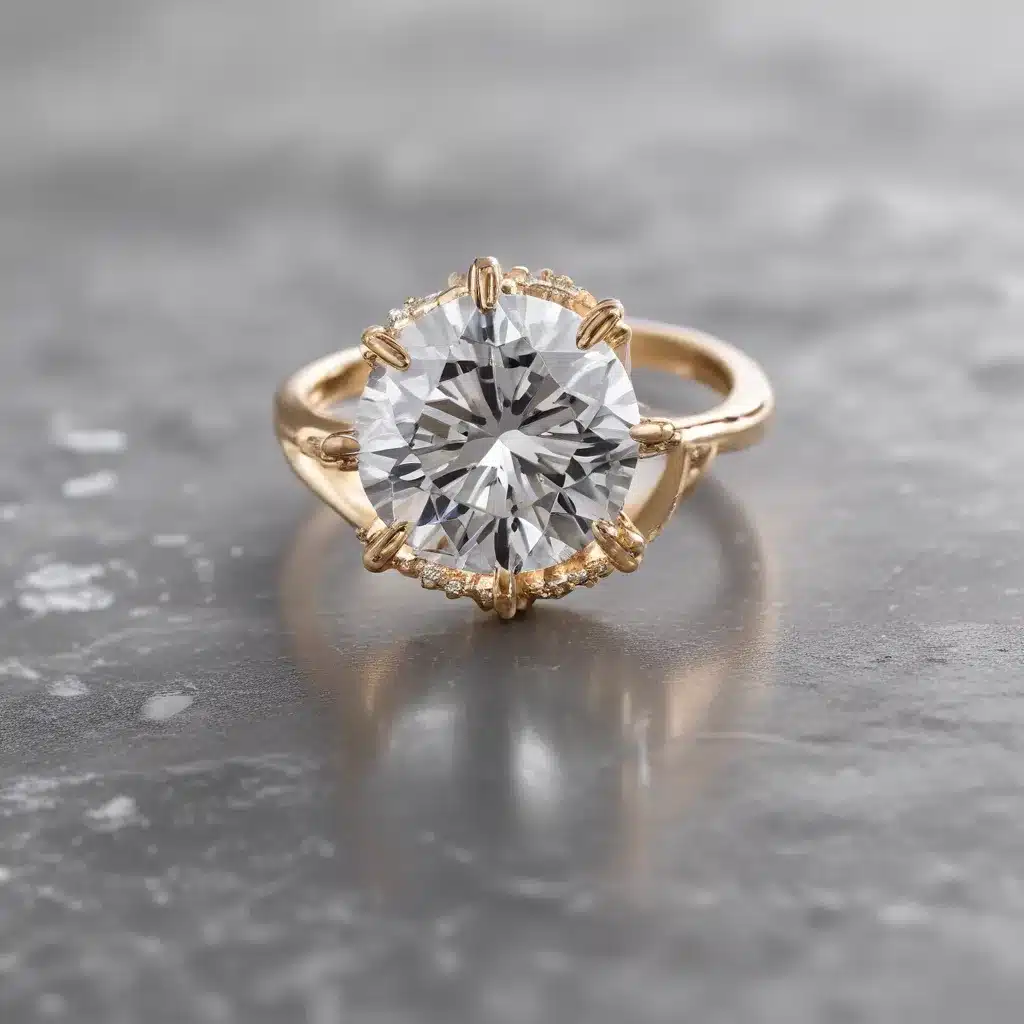
In a world where luxury and sustainability converge, the emergence of lab-grown diamond jewelry marks a pivotal shift in the realm of high-end fashion and environmental consciousness. These innovative gems, crafted with meticulous precision in controlled laboratory settings, are poised to redefine the industry’s conception of opulence and ethical responsibility.
The Emergence of Lab-Grown Diamonds
The journey of lab-grown diamonds began with a remarkable technological leap. By replicating the intense heat and pressure conditions deep within the Earth’s mantle, scientists have mastered the art of creating diamonds that are chemically, physically, and optically identical to their mined counterparts. This achievement has not only made diamonds more accessible but has also opened the doors to new design possibilities in jewelry making.
As awareness around sustainability and ethical practices grows, consumers have increasingly sought alternatives to traditional mined diamonds. Lab-grown diamonds have emerged as a viable solution, offering the same allure and splendor as natural diamonds, but with a significantly reduced environmental impact. The production of lab-grown diamonds requires substantially less energy, water, and land disturbance compared to the resource-intensive process of mining.
Moreover, lab-grown diamonds eliminate many of the ethical concerns associated with the diamond industry, such as labor exploitation and conflict financing. Consumers can now indulge in the beauty of diamond jewelry with the peace of mind that comes with responsible and transparent sourcing.
The Luxury Jewelry Market
The luxury jewelry market has witnessed a profound shift in recent years, with sustainability and environmental consciousness becoming key drivers for consumer preferences. Millennials and Gen Z, the primary purchasers of diamond engagement rings, are leading this charge, with nearly 70% of them considering lab-grown diamonds as a viable alternative.
Brands and designers have responded to this evolving landscape by incorporating lab-grown diamonds into their collections, leveraging their allure and ethical appeal to attract a new generation of discerning consumers. Celebrities, too, have played a pivotal role in popularizing lab-grown diamonds, with influential figures like Meghan Markle donning the sparkling gems on the red carpet.
The rise of lab-grown diamonds has not only challenged traditional notions of luxury but has also democratized access to high-quality jewelry. With their more accessible price points, these diamonds are opening the door for a wider range of consumers to indulge in the elegance and timelessness of diamond jewelry.
Alternatives to Traditional Diamonds
While lab-grown diamonds have emerged as a leading alternative to mined diamonds, there are other synthetic gemstones that offer unique qualities and advantages. Moissanite, for instance, is a lab-created gemstone that shares many of the same optical properties as diamonds, but at a fraction of the cost. Cubic zirconia, another lab-grown gemstone, has also gained popularity as a diamond alternative, offering a dazzling appearance at an even more affordable price point.
These synthetic gemstones not only provide a more sustainable and ethical option for jewelry enthusiasts but also allow for greater creativity and personalization in jewelry design. Retailers and designers can now offer a diverse range of options to cater to the evolving preferences of conscious consumers.
The Allure of Lab-Grown Diamonds
The technological advancements that have propelled the rise of lab-grown diamonds are truly remarkable. Chemical Vapor Deposition (CVD) and High-Pressure, High-Temperature (HPHT) processes have enabled the creation of diamonds with unparalleled quality and consistency, rivaling the characteristics of their natural counterparts.
The perceived value of lab-grown diamonds has also shifted, as consumers increasingly recognize their authenticity and appreciate the accessibility they provide. With prices significantly lower than traditional mined diamonds, lab-grown gems have become a more affordable luxury, allowing a broader audience to indulge in the timeless elegance of diamond jewelry.
Sustainability-conscious buyers have been particularly drawn to lab-grown diamonds, drawn to their environmentally-friendly production and ethical sourcing. This alignment of personal values with luxury purchases has become a driving force in the industry, shaping consumer preferences and influencing broader industry trends.
Societal and Environmental Impact
The impact of lab-grown diamonds extends far beyond the jewelry industry, as they present a more sustainable alternative to traditional mining practices. The production of lab-grown diamonds requires significantly less energy and resources, significantly reducing the carbon footprint associated with diamond extraction and processing.
Moreover, the elimination of mining-related disruptions to ecosystems and habitats is a significant environmental benefit. Lab-grown diamonds also address ethical concerns surrounding the diamond trade, such as labor exploitation and conflict financing, providing consumers with a clear conscience when indulging in these luxurious gems.
As consumer awareness and education around the sustainability and ethical advantages of lab-grown diamonds continue to grow, the demand for these alternatives is expected to rise. This shift in consumer behavior is likely to transform the industry, driving more brands and designers to embrace the ethos of sustainable luxury.
The Future of Sustainable Luxury
The future of the jewelry industry is poised to be shaped by the continued advancement of lab-grown diamonds and other synthetic gemstones. As regulations and certification standards evolve to keep pace with this innovation, consumers can expect increased transparency and accountability in the sourcing and production of luxury gems.
The technological progress in diamond synthesis, coupled with growing consumer preference for sustainable and ethical practices, suggests that lab-grown diamonds will play a pivotal role in redefining the luxury landscape. This shift towards conscious consumption is not just about aesthetics; it is a reflection of a broader cultural and economic transformation that values responsibility as much as opulence.
As the industry adapts to this new paradigm, we can expect to see further innovations and product offerings that cater to the evolving demands of a more environmentally and ethically conscious consumer base. The rise of lab-grown diamond jewelry marks the dawn of a new era in luxury, one where elegance and sustainability coexist in perfect harmony.
For more information on lab-grown diamonds, moissanite, cubic zirconia, and other sustainable jewelry options, visit Shelby Gem Factory.

